You are here
Key Exercises To Keep Your Hips Healthy
 There are many potential causes of hip pain and stiffness, and as anyone who has experienced significant trouble with a hip joint will tell you, inability to walk or even sit cross-legged without pain is a real killer of quality of life.
There are many potential causes of hip pain and stiffness, and as anyone who has experienced significant trouble with a hip joint will tell you, inability to walk or even sit cross-legged without pain is a real killer of quality of life.
Generally, I categorize hip pain and stiffness into two categories based on the source of dysfunction.
The first category is pain that emanates from the hip joint itself, the space between the ball of the thigh bone (femur) and the socket of the pelvis (acetabulum). This is typically diagnosed as a type of arthritis, degenerative or metabolic.
The second category is pain that stems from dysfunctional soft tissues that surround the hip joint. This could be a torn ligament (like a torn labrum), a chronically tight hip capsule, or injured muscles.
Regardless of which category we're dealing with, I generally encourage my clients to roll up their jogging pants and get to work on all of the tissues that surround their pelvis and lower extremities.
Hip pain and stiffness are rarely the result of having one damaged tissue. Rather, because the hip joint requires numerous supporting ligaments, muscles, tendons, and other soft tissues to keep it stable and functional, hip pain and stiffness are often symptomatic of a host of imbalances in the surrounding tissues.
This is why I encourage daily stretching and pressure work of all of the soft tissues that surround the pelvis and lower extremities, beginning with the soft tissues that line the inner part of the thigh region.
Here's a look at the inner portion of the hip that we're considering in this post:
In this inner hip region, commonly called the groin area, we have four adductor muscles, a portion of the sartorius muscle, and parts of the pectineus and gracilis muscles. Plus all of the tendons of said muscles up by their insertion points around the lower part of the pelvis.
Unless you do yoga daily and you target the hip area, you can likely benefit from stripping and stretching your inner hip area with a foam roller.
Actually, the inner hip area is typically too tight and tender for most people to go straight to a foam roller. So I usually start with a jumbo tennis ball - it's about the size and consistency of a volleyball, and allows for effective soft tissue work all around the hips and lower extremities.
How to Stretch and Massage Your Inner Hip Muscles Using a Jumbo Tennis Ball
Start by lying on your side with your head and neck supported on a foam roller or a couple of pillows.
Support your weight on the left side of your trunk and your left leg, and position a jumbo tennis ball on the ground right in front of your groin area. Then, place the inner portion of your right hip over the ball - this is the ready position.
Allow your right knee to drop until the inner portion of your right hip is lying on the ball.
Letting gravity push your right groin muscles and tendons into the ball, slowly move your leg down, allowing your inner hip area to roll over the ball. Go slowly, maintain steady breathing, and feel free to pause and apply some downward pressure on the ball whenever you hit an area that feels particularly tight.
Now slowly bring your right hip up towards your trunk, and again, feel free to pause and work on areas that feel especially tight.
The goal is to move your hip joint through a circular motion while maintaining steady pressure on the ball with your right inner hip region. This exercise stretches and massages the soft tissues in this region and improves blood flow to the area.
And if you do this exercise daily, preferably later in the day when you're not prone to pulling anything, you can rest assured knowing that tight groin muscles aren't contributing to any compensatory problems in your lower back, knees, or anywhere else in your body.
Here's a brief video clip that shows this exercise in real time:
As with all body work, it's best to work on both sides of your body to prevent imbalances from developing.
How to Stretch Your Groin Region Using a Foam Roller
Once you have the experience of working on your inner hip area with a jumbo tennis ball or volleyball, you can move on to using a foam roller for even greater gains.
You'll need to support your body on your elbows and knees, and tuck the edge of your foam roller under your belly and under and in between your thighs so that the edge of the roller is in contact with your inner hip region.
While maintaining balance on your elbows and mainly your off (resting) leg, slowly move your body so that your right inner thigh rolls along the foam roller and experiences solid stripping action. It should feel like a deep tissue massage, and again, you can pause and increase pressure on your soft tissues when you find areas that require more attention.
Here's a brief video clip that shows how to use a foam roller to stretch and strip out the soft tissues in your groin:
Please keep in mind that it's always prudent to work with a medical professional to determine a definitive or working diagnosis whenever you are dealing with any health challenge.
If you don't have a foam roller and are looking to invest in one that offers a blend of comfort, durability, and ideal density to provide therapeutic rolling of your muscles and ligaments, please feel free to have a look at the one that I had custom made for our clients here:
For a DVD that presents still photos and video clips that illustrate how to take your body through all of the major stretches and foam rolling exercises you can do to keep your body as healthy as your genetics will allow, have a look here:
Stretching and Foam Rolling DVD, by Sharon Lee and Dr. Ben Kim
If you eventually find that your muscles can use more pressure than what a jumbo tennis ball or volleyball can provide, I recommend using an 8 or 10 pound medicine ball like the one below:
If you need something lighter but just as firm, I recommend choosing their black and purple 4 pound ball.
Hope these guidelines prove to be helpful.
Related Post:
Join more than 80,000 readers worldwide who receive Dr. Ben Kim's free newsletter
Receive simple suggestions to measurably improve your health and mobility, plus alerts on specials and giveaways at our catalogue
Please Rate This
Highest Rated | Related Posts | ||








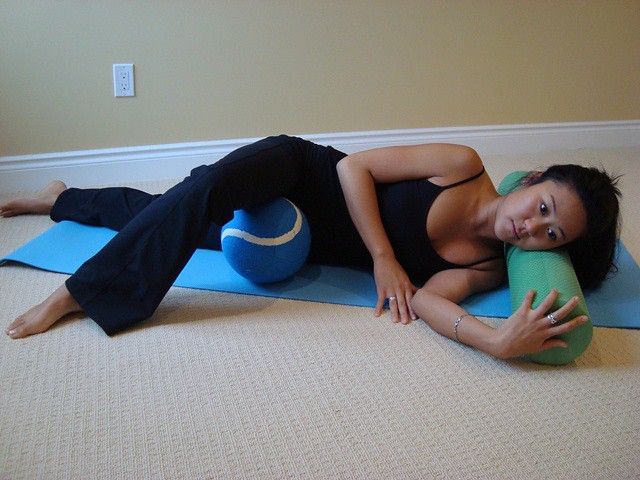
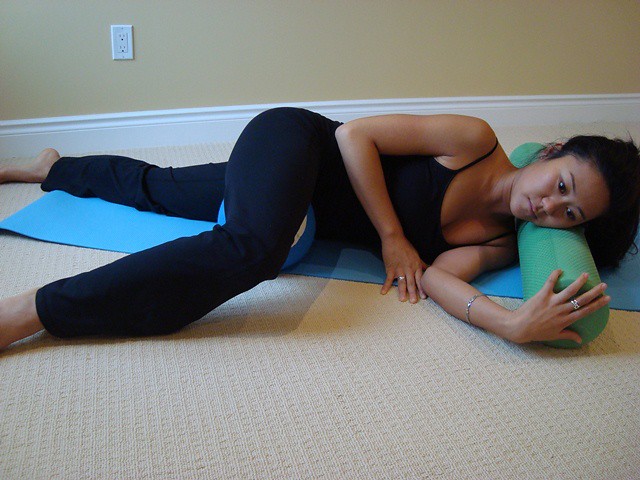
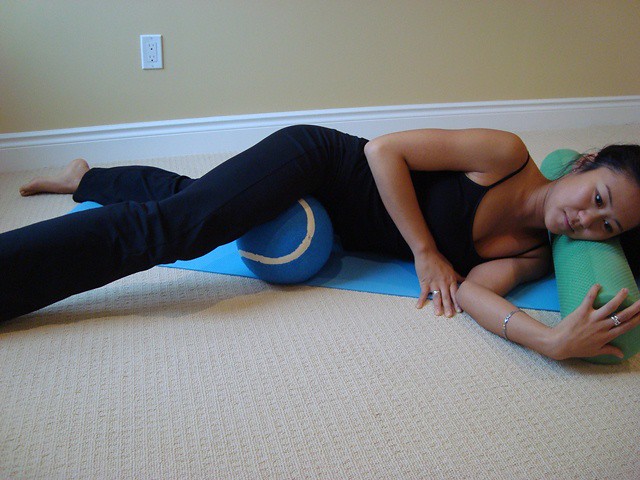
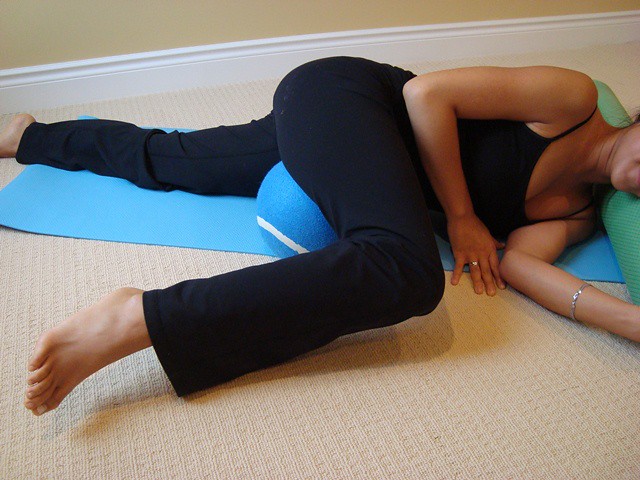
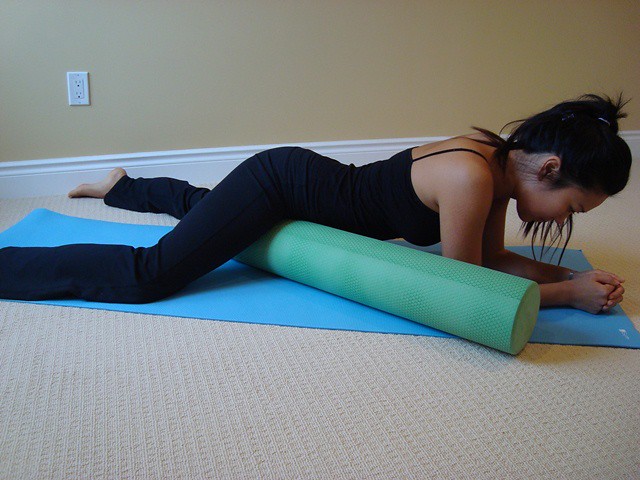





Comments
bought one today!
I'm excited to start using the foam roller...I can attest to the fact that it really works the muscles.
Cautionary advice
I think that if you have varicose veins, or have a propensity to getting blood clots easily you should not use a foam roller to massage your lower leg for sure, or you inner thigh. I have bad varicose veins in my left leg, and did not use the foam roller for my lower legs, but used it for my inner thighs and believe I developed some blood clots- a few. I could feel the hardness in some spots and my leg bothered me when I walked. So I started doing weight training and cardio exercises, and taking supplement Nattokinase and other supplements, and noticed that the hard blood clots gradually subsided and leg felt much better when walking. I believe the foam roller is not for everybody. I may me a rare case, but I thinks this is something to consider when using the foam roller. A few years ago, I was on blood thinner drugs for a blood clot in my lower leg. The blood clot did go away in about 3 months, but the varicose veins are still there and can be injured very easily. Hope this advice helps.
Thank you So Much for this
Thank you So Much for this Article. Most of my Family has
Degenerative Disc Disease and Lately I have been dealing with
Issues due to Hip Pain which is the onset of this Family trait beginning to Hit me and I am looking for ways that maybe can help me More Naturally rather than do as the rest of my family has done and go to the doctors for Medications to relieve the pain which to me I just refuse that way to go. I am not a person that Likes to take any kinds of Medications and I feel the Body can Heal itself if you Help it.
I am looking forward to doing this exercise and waiting for the Others to be posted.
Foam roller exercises
Just this week I purchased the foam roller for massaging soft tissue. Although there was a mini chart of exercises, it didn't address areas upon which I wanted to focus. However, the hip exercise did meet a need for me. The video demonstration was immensely helpful. I am looking forward to more pictures and video clips in the coming weeks. Thank you, Dr. Kim.
Very helpful, and also wondering...
The videos are extremely helpful in demonstrating the logistics of doing these exercises. If I may, I think it would be extremely helpful to also employ the use of male demonstrators, especially with exercises that are in the groin area where many men may have hesitation about placing all their weight onto a hard rolling surface and employing movement. Thank you again for all your hard work. It is much appreciated.
foam roller
I was preparing to teach my kickboxing class but arrived a little earlier than usual. Although I stretch properly on a regular basis, three days a week, I decided to use the foam roller from the yoga class that was sitting in the corner of the room (it winked at me). I never thought how helpful the foam roller could be. Hearing so much about it and all. I usually have lower back pain and inner hip as well. I can honestly say that, it's been two days since I used the roller, and my back/hip pain has not reoccurred.
Thank you for your post Dr. Kim. As usual, great advice
I love these stretches. I've
I love these stretches. I've been recommending your website to my co workers. One of them has scoliosis. Would these be safe for him to do and what other stretches or exercises would be good for his condition?
Hi Shareen,
Hi Shareen,
With any condition, including scoliosis, it's generally fine to try these and all of the other movements presented in our videos and in our Stretching and Foam Rolling archive. If there is pain, it is prudent to stop, and whenever possible, it is best to first work with a movement coach, physiotherapist, chiropractor, or another health care practitioner who can provide some guidance and ensure that movements are being performed safely.
Knee "exercises"
I cannot seem to find article you may have re "healthy knees"...might you have a specific one?
Knee exercises
Hi Snaque,
Thank you for your question. You can find all of Dr. Kim's best advice and demonstrations by typing in the topic you are looking for, such as "knee", into the search box at the top of this page. You will find articles he has written on this topic, as well as exercise videos that may be helpful to you.
Sincerely,
Colleen
Client Care Manager
Hip exercises
Just did the ball and foam roller exercises. It is in my nature to be highly suggestible and positive when trying new things. Is it possible to feel better after one session? I believe I do! I am rather desperate for nonsurgical relief from arthritis, labral tears, cysts and edema of the hip - yup I pretty much have it all. I'm 55 and have tried nutritional remedies, physical therapy, massage, stretching, pain medication, injection, the Egoscue method, essential oils, heat, ice, relaxation and prayer. I'm probably forgetting something. Tested negative for RA. I am not opposed to THR and ortho says I can be it anytime I wish. It isn't a great time for me right now but I am not opposed to it. Just trying to get some relief
from the 24/7 pain and obsession I have.
I'm going to keep up wth these exercises and add in a little yoga (I find the plank very helpful). I'll certainly try some of the others for my back and sacroiliac joints which also are problems.
If you have any other suggestions for me please share. I am under a doctor's care and am cautious and careful when starting a new routine. I feel so fortunate to have found your site. It took me 18 months to find you!
Joanne